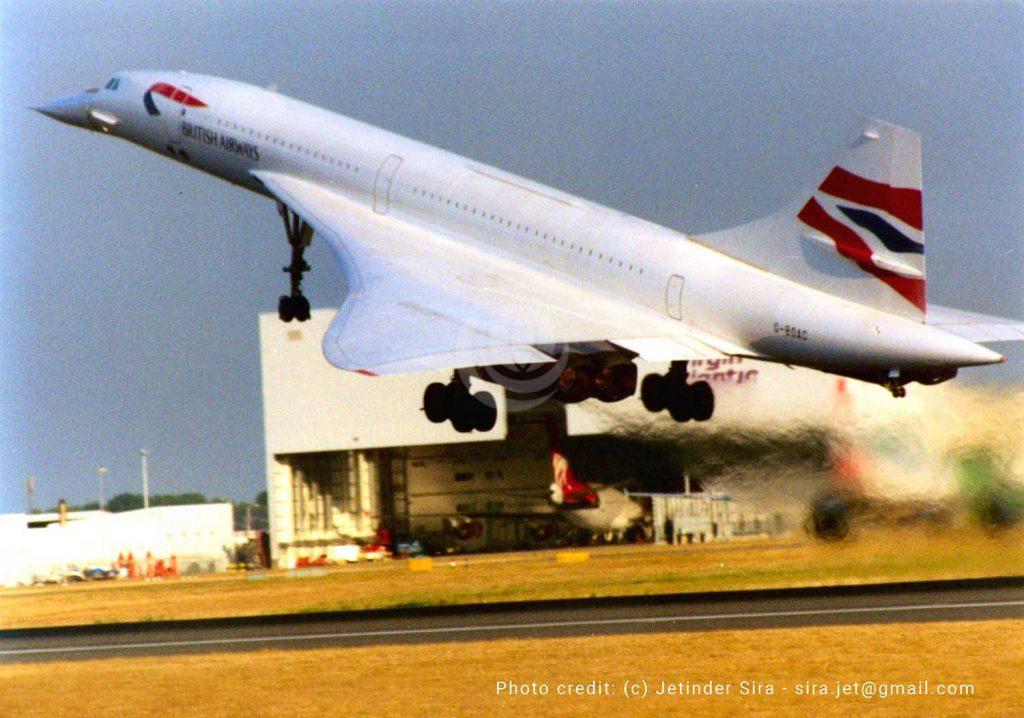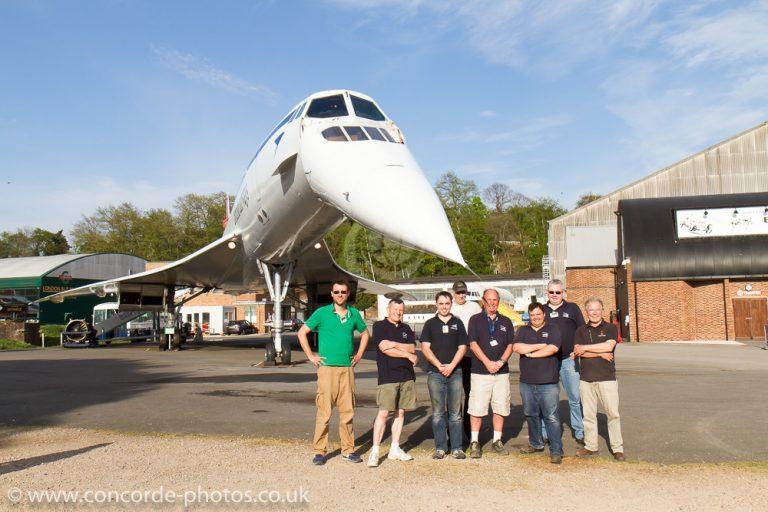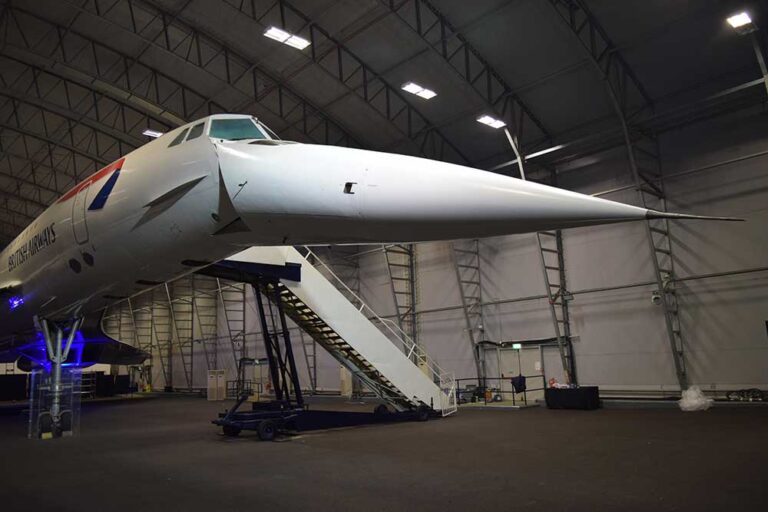As the world’s first supersonic airliner, Concorde entered service in 1976 and continued commercial operations for British Airways and Air France until 2003.
During the operation chapter in Concorde history, she regularly flew passengers across the Atlantic in just 3½ hours – with a record-breaking flight from London Heathrow to New York JFK in 1996 taking only 2 hours, 52 minutes and 59 seconds.
One of the most distinctive engineering features of Concorde was her hydraulically operated “droop nose.” Designed to solve visibility issues during take-off and landing, it allowed pilots to see the runway clearly despite the aircraft’s high angle of attack. The streamlined nose, essential for supersonic speeds, would otherwise have blocked the pilot’s view by up to 5 degrees.
The droop nose could be configured throughout the flight, working in tandem with a retractable visor that tucked into the nose before it lowered. There were four nose/visor positions: lowered for take-off and landing to improve visibility, and raised during flight to maintain aerodynamic efficiency and protect the windshield from extreme frictional heating.

Concorde’s hydraulic system powered the movement of both the visor and droop nose—two of the aircraft’s most distinctive features. This system relied on selector valves, jacks, and locks, with the green hydraulic circuit used for normal operations and the yellow system as a standby. If both systems failed, a manual emergency free-fall mechanism allowed the nose and visor to lower safely.
In total, only 20 Concordes were ever built. Today, 18 remain preserved, each representing a remarkable piece of Concorde history.
Explore more about Concorde’s engineering and legacy at Heritage Concorde.
Return to our Concorde Homepage
More on our work with Heritage Concorde…
Concorde G-AXDN
Duxford Aviation Society, owners of the British Airliner Collection, were keen to improve their display of Concorde 101 G-AXDN at the Imperial War Museum, Duxford.
In response, Heritage Concorde proposed making her the first UK Concorde since 2003 to be able to “droop” her nose. The hydraulic systems on Concorde 101 G-AXDN had not been used since she was retired in 1977 and so the team approached Hydraulics Online asking if we could help on “Project Salute”.
Learn MoreConcorde G-BBDG
G-BBDG (known as Delta Golf, pictured) was the British pre-production Concorde built to finalise the design and to allow the Concorde fleet to receive certification before the other aircraft entered passenger service.
Now residing at the Brooklands Museum this important piece of aviation history has a fully functioning droop-nose and visor – the second Concorde to receive a custom-made power pack from Hydraulics Online!
Learn MoreConcorde G-BOAC
Concorde G-BOAC, aka “Alpha Charlie”, located at the Manchester Airport Runway Visitor Park, is the third Concorde in the country with a restored moving nose and visor, expertly engineered by our Cheshire-based engineers and the Heritage Concorde team.
The restoration coincided with the celebrations for Concorde’s golden jubilee on 2nd March 2019 – marking 50 years, to the minute, since the first Concorde flight which took off from Toulouse at 13:30 GMT on 2nd March 1969.
Learn More






